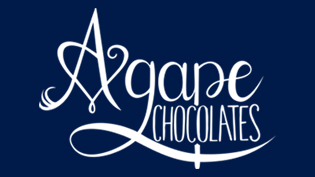Chocolate Care Instructions:
- Chocolate tastes best at room temperature. If you plan to eat it within a few weeks, keep in a cool, dry location between 60 – 75 degrees Fahrenheit. Otherwise, store them in the refrigerator and allow to warm to room temperature before eating.
- Keep chocolate wrapped tightly or in an airtight container when storing because chocolate will readily absorb flavors and odors.
- For long-term storage, seal chocolates with plastic or foil and put them in the freezer. Thaw for 24 hours in the refrigerator, then place it on the counter and allow the chocolate to come to room temperature.
- Dark chocolate actually improves with age, like a fine wine, if stored in an airtight container at 60–65 degrees Fahrenheit.
- If the storage temperature exceeds 75 degrees Fahrenheit, some of the cocoa butter may appear on the surface, causing the chocolate to develop a whitish cast, known as “bloom.” The chocolate will still be fine to eat.
Chocolate Nomenclature:
To make sense of the most common labels on chocolate, here is a brief lexicon. The minimum standards cited are those established by the FDA.
- Unsweetened chocolate is the closest we can get in the marketplace to buying pure chocolate liquor since it contains nothing more than cocoa solids and cocoa butter. It can also be called chocolate, bitter chocolate, baking chocolate, and cooking chocolate.
- Sweet chocolate is the most confusing category since it includes all dark chocolates that have any amount of sugar added. By law, sweet chocolate must contain a minimum of 35% chocolate liquor, but most good-quality supermarket and restaurant chocolates have closer to 55%. On the top end, some dark chocolates have as much as 70% or more.
- Semisweet chocolate and bittersweet chocolate are both subcategories of sweet chocolate. While both must also contain a minimum of 35% chocolate liquor, semisweet chocolate will contain less sugar than sweet chocolate, and bittersweet even less.
- Couverture means covering in French; it’s a term used by professionals for a chocolate made with an exceptionally high percentage of cocoa butter. The high fat content means that the chocolate will melt very smoothly to create thin coatings that harden well.
- Milk chocolate must contain a minimum of 10% real chocolate liquor (although some contain as much as 40%) and 12% whole milk.
- White chocolate isn’t really chocolate since it contains no cocoa solids but only cocoa butter. Currently the FDA has no standards of labeling for white chocolate, but these are being developed. In general, the best white chocolate will have a higher percentage of cocoa butter and lesser amounts of other fats.
- German chocolate is a brand name for a sweet dark chocolate (sweeter than semisweet) that was developed by Samuel German, an employee of the Bakers chocolate company. The eponymous cake was created in Dallas in the 1950s.
